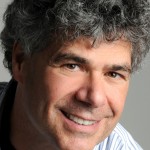 PHILIP STEPHEN MARCUS is a Professor of Fluid Dynamics in the Department of Mechanical Engineering at the University of California at Berkeley. He is also the Head Advisor for the UC Berkeley Graduate Program in Applied Science and Technology.
PHILIP STEPHEN MARCUS is a Professor of Fluid Dynamics in the Department of Mechanical Engineering at the University of California at Berkeley. He is also the Head Advisor for the UC Berkeley Graduate Program in Applied Science and Technology.
Professor Marcus is a computational physicist (a former Associate Editor of The Journal of Computational Physics) working in fluid dynamics (he is a former Associate Editor of The Journal of Fluid Dynamics). He is a Fellow of the American Physical Society and was the Chair of the American Physical Society’s Division of Fluid Dynamics in 2008-09. He is also active in the American Physical Society’s Division of Computational Physics. Marcus is the head of the Department of Mechanical Engineering’s Laboratory for Computational Fluid Dynamics. His research spans a range of fields, and it incorporates the development of new algorithms for scientific computing (especially in the use of spectral methods). As a computational physicist he seeks out collaborative studies with experimentalists of chaotic and nonlinear flows (e.g., centrifugally driven Couette-Taylor flows, as well as the first joint computational/laboratory study of Jupiter’s Great Red Spot), and astrophysical fluids dynamics, including planetary atmospheres, star formation, and the particle-laden fluid flows responsible for planet formation. His current research in algorithm development, astrophysical fluid flows, and internal gravity waves is supported by NASA and the National Science Foundation. Marcus was a Distinguished Speaker at the 2005 Harrington Symposium on Global Climate Change at the University of Texas at Austin, a Miller Professor in 2005-2006 at the University of California at Berkeley, the Midwest Fluid Mechanics Tour Lecturer in 1998 and again in 2008, a Distinguished Lecturer at Arizona State University in 1994, and a Haverford College Distinguished Visiting Professor in 1987.
Professor Marcus received his B.S. in Physics from Caltech in 1973 and his Ph.D. in Physics from Princeton in 1978. As a National Science Foundation post-doc at Cornell in Astronomy he became interested in large-scale numerical simulations of convection in stars and laboratory flows using spectral methods. While an assistant professor from 1980-83 at MIT in Applied Math he concentrated on the development of numerical algorithms and their application to the nonlinear dynamics of rotating flows such as Couette-Taylor flows. He became interested in long-lived vortices and their application to planetary atmospheres as an Associate Professor of Astronomy and Applied Mathematics at Harvard from 1983-1986.